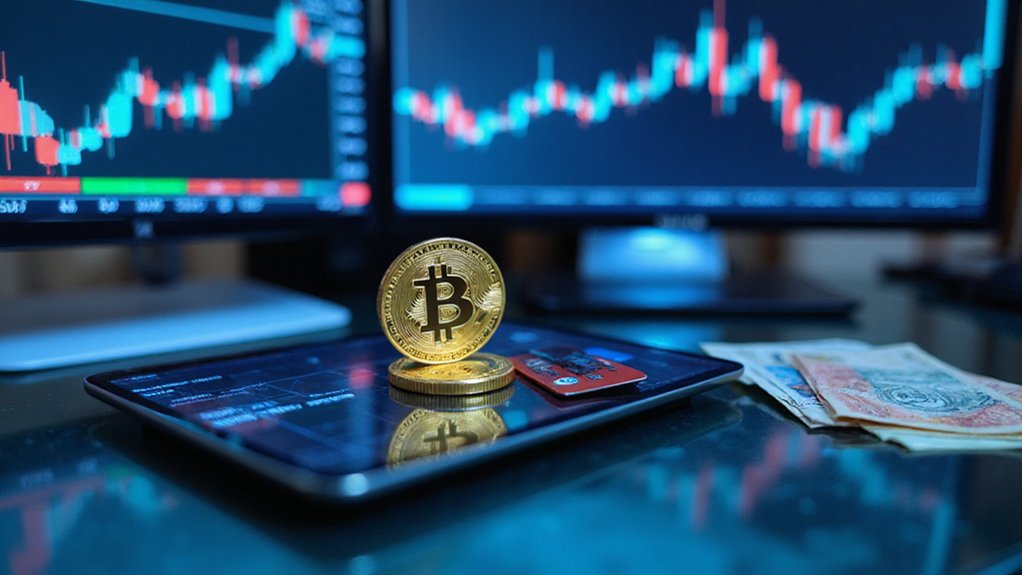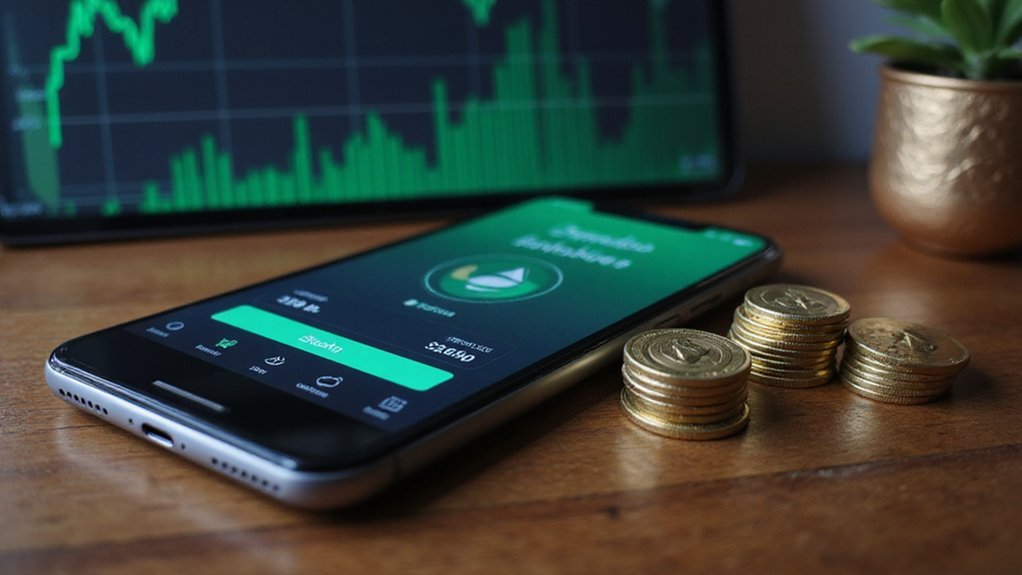Spot trading involves the immediate exchange of assets at current market prices with prompt settlement, typically within two business days. Unlike derivatives with deferred settlements, spot transactions transfer ownership directly to buyers without temporal complications or leverage risks. This fundamental mechanism operates across multiple asset classes—from $6.6 trillion daily forex markets to cryptocurrencies, equities, and commodities—offering participants transparency, immediacy, and reduced systemic risk. The elegance of spot trading lies in its straightforward execution amid a constellation of more exotic financial instruments.

How often does the average person conduct a financial transaction without considering the underlying mechanism that enables it?
The mundane act of purchasing groceries or exchanging currency for an overseas trip constitutes, in financial parlance, a form of spot trading—that most fundamental mechanism whereby assets change hands at their current market value, with immediate settlement.
Spot trading, essentially, represents the simultaneous exchange of financial instruments or assets at prevailing market prices, with ownership transferred directly to the buyer.
The quintessential market mechanism—transferring ownership at current prices without temporal distortion or derivative complexity.
Unlike its more complex derivatives cousins (futures and options contracts that defer settlement to some arbitrary future date), spot transactions complete “on the spot,” typically settling within one to two business days—T+1 or T+2 in industry vernacular.
This immediacy provides traders with unparalleled responsiveness to market fluctuations while obviating the need for leveraged positions that might otherwise trigger those dreaded margin calls.
The ubiquity of spot trading spans virtually every asset class imaginable.
The foreign exchange market—that behemoth of financial activity generating over $6.6 trillion in daily volume—operates primarily through spot transactions.
Similarly, cryptocurrencies have embraced this trading modality, allowing holders to transact without the temporal complexities inherent in futures markets.
Traditional equities and commodities markets likewise facilitate spot trading, enabling investors to acquire everything from Apple shares to barrels of crude oil with minimal settlement delay.
In forex markets, most spot contracts are specifically designated for physical delivery within two business days after the transaction date.
What renders spot trading particularly attractive to market participants?
Beyond the aforementioned immediacy of ownership, the mechanism offers welcome transparency in an industry often shrouded in opacity.
The absence of leverage reduces systemic risk, while the flexibility to reallocate assets without contractual obligations provides tactical advantages.
These markets can operate through exchanges where trading is conducted using the current market price or through negotiation between parties.
For institutions and retail traders alike, spot markets represent the financial world’s most direct expression of value—where price discovery occurs without the distorting effects of time preferences or derivative structures.
In many ways, spot trading functions like a market order in traditional investing, prioritizing immediate execution over price specificity.
In the constellation of trading methodologies, spot trading remains the fixed star around which more exotic instruments orbit.
Frequently Asked Questions
What Are the Risks Involved in Spot Trading?
Spot trading harbors significant risks that prudent investors shouldn’t underestimate.
Market volatility creates dramatic price swings that can evaporate capital with alarming efficiency.
Security concerns loom large—asset custody remains the trader’s responsibility, with irreversible consequences for lapses.
Market manipulation by institutional “whales” can distort prices, leaving retail traders floundering in their wake.
Meanwhile, regulatory gaps persist in many jurisdictions, offering minimal protection while emotional decision-making—that perennial nemesis of rational investing—frequently undermines even well-conceived strategies.
How Much Capital Do I Need to Start Spot Trading?
There’s no universal minimum to commence spot trading—the capital threshold depends largely on platform-specific requirements and the asset class in question.
While some cryptocurrency exchanges permit entries with as little as $10, traditional securities brokerages might demand $500-$1,000.
The more pertinent consideration, however, is risk management; prudent traders typically allocate only 1-2% of their portfolio to any single position, suggesting that meaningful diversification requires more substantial capital reserves.
Which Cryptocurrencies Are Best for Beginners in Spot Trading?
Beginners in spot trading typically benefit from cryptocurrencies offering a balance of stability and learning opportunity.
Bitcoin and Ethereum provide foundational exposure with extensive educational resources, while stablecoins (USDT, USDC) offer reduced volatility for cautious newcomers.
BNB presents trading fee advantages, particularly on Binance.
For those seeking manageable volatility with decent liquidity, Cardano, Ripple, and Tron represent sensible options.
The ideal selection ultimately depends on risk tolerance and trading frequency—stablecoins for the risk-averse, established large-caps for balanced exposure.
Are Spot Trading Gains Taxable?
Yes, spot trading gains are unequivocally taxable.
The IRS views cryptocurrency transactions—whether converting to fiat or swapping one digital asset for another—as taxable events.
Gains are classified as either short-term (held <1 year, taxed at ordinary income rates) or long-term (held >1 year, with preferential rates).
The adjusted cost basis, which includes acquisition fees, determines the taxable amount.
Traders often underestimate the record-keeping burden until tax season arrives—a classic financial reckoning.
How Do Spot Trading Fees Compare Across Different Exchanges?
Spot trading fees exhibit considerable variation across exchanges, with competitive platforms like Crypto.com offering rates from 0.075% while KuCoin starts at 0.1% (with potential 20% discounts for KCS token users).
These differences, while seemingly negligible to novices, represent significant margins for high-volume traders.
Most exchanges employ tiered structures where fees decrease as trading volume increases, and savvy traders can further reduce costs by utilizing native tokens or qualifying for VIP programs.









